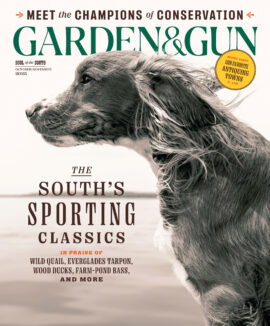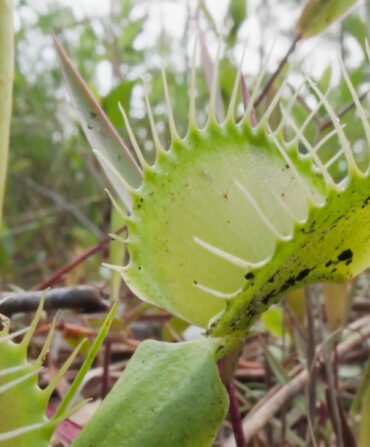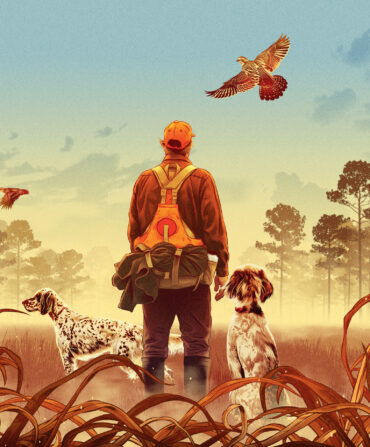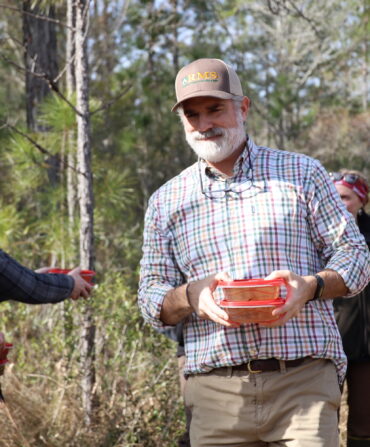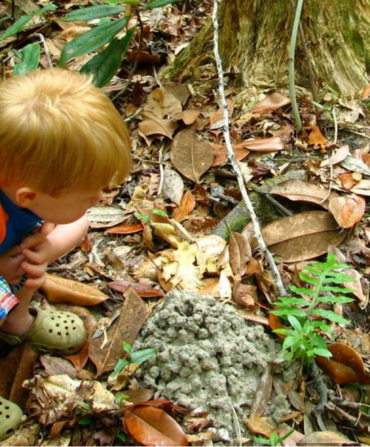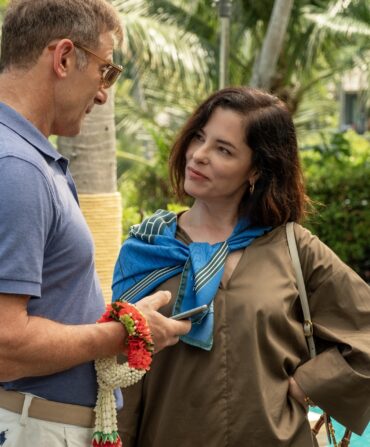Sporting
Out on the River with Angling All-Star Blane Chocklett
A child of the Blue Ridge with an artistic streak, Chocklett learned early the science behind tying flies. Little did he know his cutting-edge designs would launch him to the heights of angling royalty
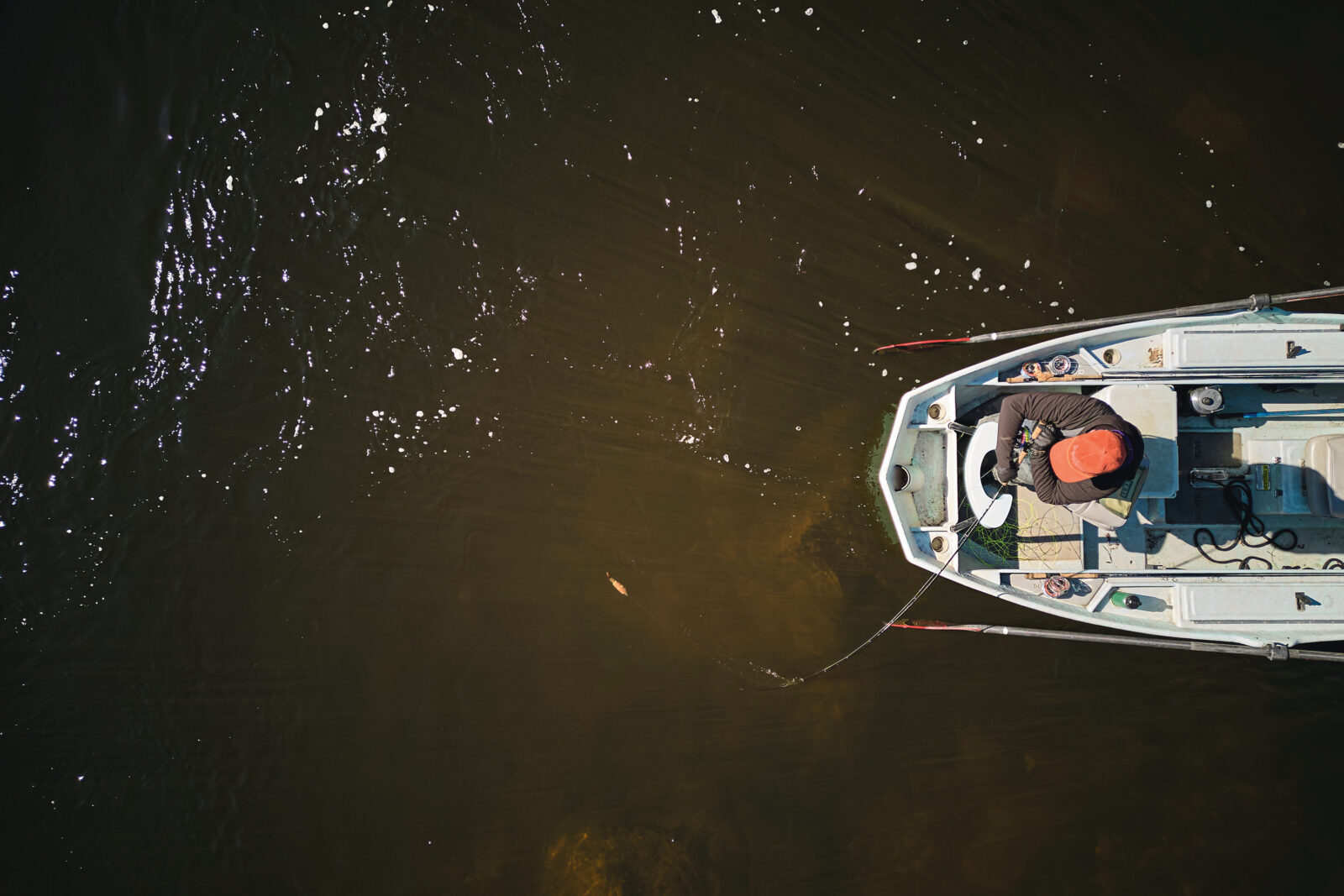
Photo: Peter Frank Edwards
Fishing for muskies near Blane Chocklett’s home in Virginia.
There are days when you wouldn’t want to be Blane Chocklett, and this is shaping up to be one of them.
We planned to spend the morning floating a super-secret Southwest Virginia creek, catching smallmouth bass. Afterward, we would hike into a rhododendron-canopied slice of Blue Ridge trout heaven and close out the day with dry flies and native brookies. But none of that is panning out as we’d hoped. So far, we’ve drifted through pool after gorgeous, fishy-looking pool of no fish. I’ve brought smoked pheasant and good cheese and cold beer, but all of that is a meager salve on the wound of what has the makings of a busted trip. Maybe it’s a little too early in the season for the smallies to push up the smaller creeks. Maybe they’re still in the larger rivers. Wherever they are, we aren’t there. The result? Blane Chocklett is feeling a particular brand of Blane Chocklett pressure.

That’s because Chocklett, one of the most influential fly anglers and fly designers in the world, wants me to catch the fish of his youth in the waters of his youth. The Virginia native is a highly sought guide, mostly for giant muskellunge, the ferocious “water tiger” of cold-water rivers. He might chase the big predators a hundred straight days in a winter season before turning to smallmouth in the spring and saltwater marsh fishing in the summer.
Year-round, the fifty-one-year-old is in near-constant motion, walking a tightrope between being an everyday small-town guy just eat up with fishing and his status as an angling celebrity. He’s an ambassador for many of the most recognized brands in the game (YETI, Patagonia, Temple Fork Outfitters, Scientific Anglers, Costa del Mar). He hosts a podcast for the American Saltwater Guides Association that highlights conservation issues, and he travels in the highest circles of fly-fishing royalty—casting with Flip Pallot one day, jetting to northern Saskatchewan for a photo shoot for Costa the next week.
He’s known especially for his revolutionary design of the Game Changer family of streamers—large, articulated flies that can measure nearly a foot long. In 2018, he partnered with a factory overseas, where workers now tie several thousand Game Changers a month. Despite the distance, he feels a responsibility “to build a community and culture that understands fishing and flies and fly tying from a deeper perspective than just churning stuff out for some American dude.” He ships over the latest in fly rods and reels and holds video classes for the workers on fly tying. Last year he launched a separate company, the Chocklett Factory, to pull together all of his designs and tying materials under one label. Despite all of that, he retains an aw-shucks charm, humble and soft-spoken. Even pulling that off is a particular kind of pressure.
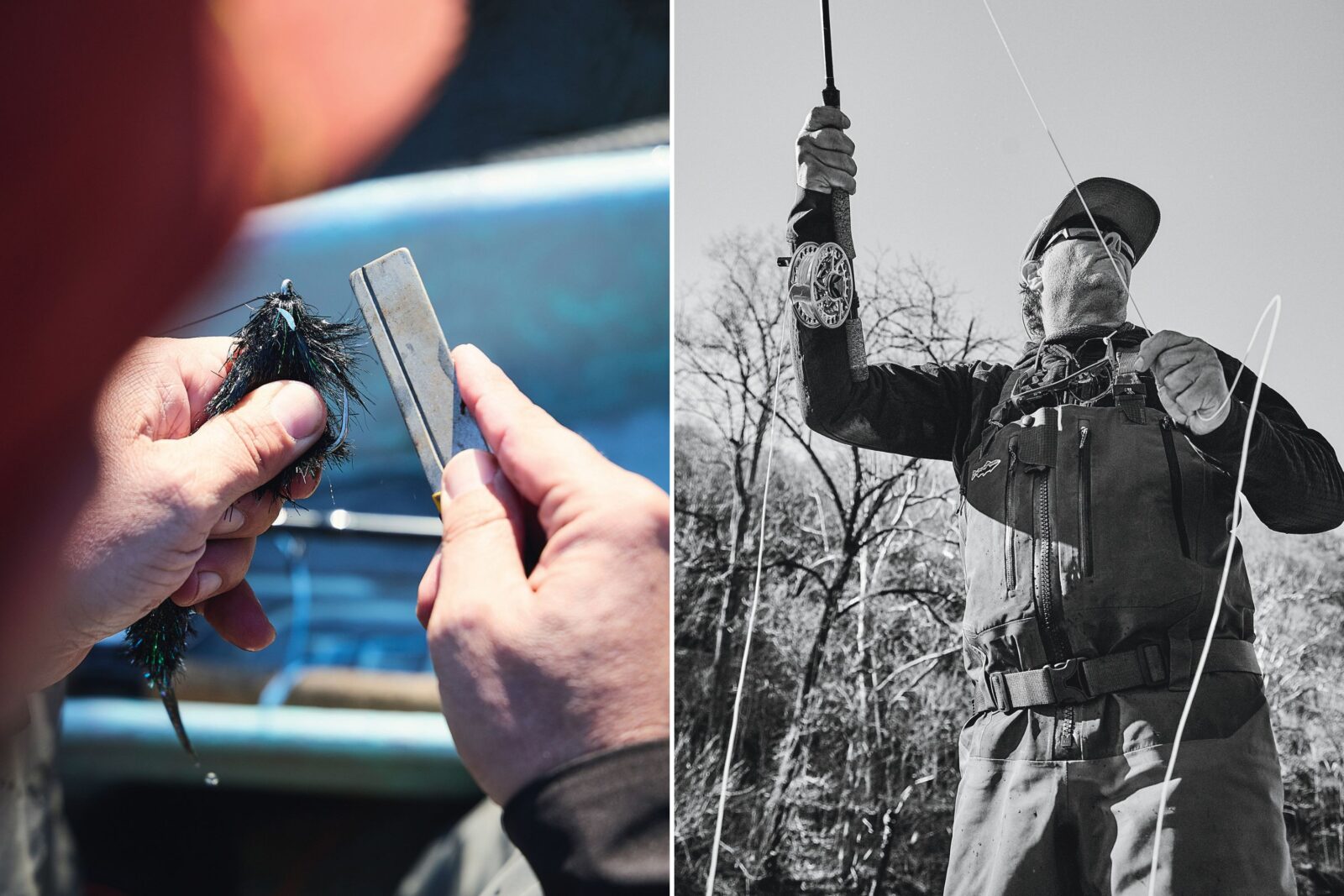
Photo: Peter Frank Edwards
Blane Chocklett puts an edge on a hook; unfurling a cast
Days like today don’t help. It’s just one of those times when we can’t buy a fish. We can’t even rent one for a few seconds on a bent fly rod.
When we planned this trip, Chocklett told me we were rolling the dice. It’s an in-between time, he explained. The bass would just be coming out of winter torpor. Hit it right, and the big females would be feeding in a pre-spawn fervor. Hit it wrong, and the fish wouldn’t be in the creek yet. Even on a good day, he warned, “you don’t catch many, but the ones you do catch, you don’t forget.”
Now he casts a few more times to water where he’s caught uncountable fish over the years. Still, it’s nothing on top of nothing. “I do this all the time,” he mutters, painfully. “Paint myself into a corner.” But one of the secrets of his success is finding opportunity in overlooked spaces—making things happen instead of waiting for them to happen.
Chocklett lives on the steep side of a low mountain north of tiny Troutville, Virginia, where two-story white-framed homes perch over the Lee Highway in a way you can tell was not intended, that did not exist before the road became four-laned and paved, the asphalt creeping toward the front porches. A few turns off the highway, a sign warns, STATE MAINTENANCE ENDS. That marks the edge of Chocklett’s front yard. Before the trees are fully leafed out, you can catch glimpses through the bare limbs of a vast sweep of rural Virginia.
He grew up barely five miles away. It wasn’t backwoods, but it wasn’t big-city lights, either. His family didn’t have cable television. If he wanted to watch anything decent, he had to go into Roanoke, where his grandmother lived. That’s just what he did on many Friday nights, so that on Saturday mornings he could catch Flip Pallot’s The Walker’s Cay Chronicles on ESPN, and sometimes The Hunt for Big Fish with Larry Dahlberg, Jerry McKinnis’s The Fishin’ Hole, or any of the other outdoors shows that fanned the flames in a country boy already crazy about fishing. He learned about Lefty Kreh, he says, “who had written about a thousand books on fish, and, thank God, the Roanoke library had a lot of them.”
Early on, he was handy with a sketchbook and paintbrush. His parents pushed him to cultivate his artistic skills, and he pushed back. “You know how you are as a kid,” he says, sheepishly. “I’d be in the neighborhood playing football with my buddies, and my mom would pull up and holler, ‘You’ve got to go to art class!’ I did it, reluctantly, but once I got there, I really enjoyed the process.” Ultimately, though, he felt little gratification in the act of creation, until he discovered fly tying. “I could take my art background and creative mind and actually see results,” he explains—thunderous surface strikes and heart-stopping underwater attacks from predator fish. “That sealed the deal.”
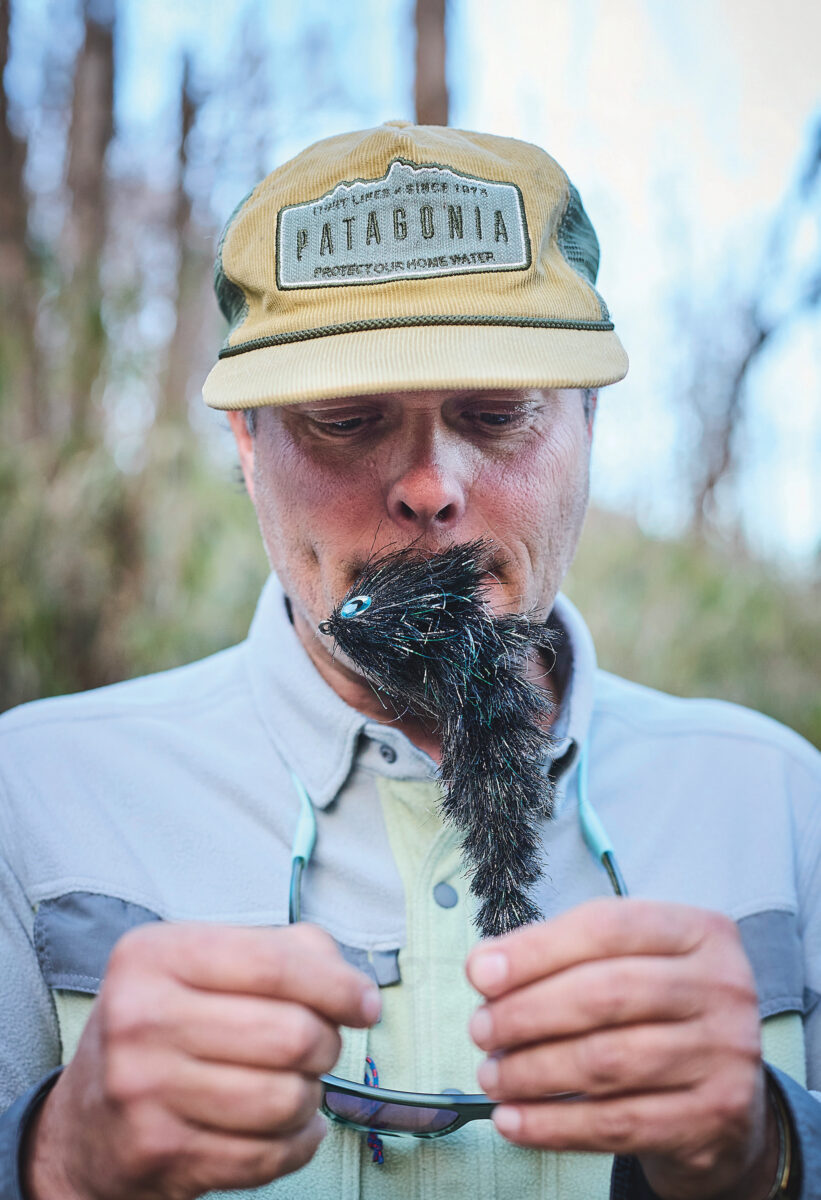
Photo: Peter Frank Edwards
Chocklett preps a leader for a large Hybrid Game Changer.
Standing in his driveway, Chocklett is wearing flip-flops, blue jeans, and a Western snap shirt. In the two-car garage sit a Drake poling skiff and an impressive arrangement of grills, smokers, and fire kettles. A dozen pairs of waders hang from hooks. His fly-tying table is a mosh pit of synthetic fibers and wire and artificial fish eyes. Clothes spill out of waterproof duffel bags from his most recent trip. Or the one before that.
In his neck of the Blue Ridge, good water flows in every direction: the New and James Rivers, creeks big and small, and tiny brook trout streams you typically access on your hands and knees. But it was the Jackson River that served as Chocklett’s graduate school.
Before he could drive, his mother would deliver him to this tailwater in the Allegheny Mountains and drop him off near the bank. He has always been a “shy person by nature,” he says, and time on the water suited a desire for solitude. He was just starting to fly fish, and he would see a couple of older gentlemen outcatching him ten to one or worse. One day, he wandered up to one of the men and asked him what fly he was using. Instead of giving him an answer, the fellow took him to his car and handed him a few glass vials and a copy of W. Patrick McCafferty’s seminal Aquatic Entomology: The Fishermen’s and Ecologists’ Illustrated Guide to Insects and Their Relatives. He told Chocklett to pick up rocks, collect a few samples of the bugs crawling beneath them, and take them home and tie flies that looked like the real thing. The fishermen, it turned out, were Steve Hiner, an aquatic entomologist at Virginia Tech, and Harrison Steeves, a Virginia Tech biologist and well-known angler and fly designer.
A couple of days later, Chocklett read about the larvae of a particular species of blackfly that affix themselves to underwater rocks with a tiny silk thread, like a snippet of spiderweb. When they pupate into the adult stage, these bugs build a little shuck around themselves and rise to the water’s surface inside a tiny air bubble.
At the time, the girls in his school were threading tiny glass beads onto shoes and pens and using them for homemade earrings. Chocklett was inspired. He asked his mom—yes, her again—to drive him to a local craft store, where he loaded up on glass beads. Clear pearl ones, he found, looked the most like an air bubble underwater. He tied up small black emerger flies with clear beads, and “sure enough,” he says, “I started catching fish left and right.”
For Chocklett, the experience would serve as a guiding light over the next decades: “Fly design and how fish react to what you throw at them is the most important part of our sport,” he says. “It doesn’t matter how expensive your rod is, your reel, your boat, your line, or any of that. Flies can be as ugly or as pretty as you like. But the fly has to look and move like something they want to eat and eat right now.”
Like most big breaks, Chocklett’s came after years of doubt and toil. Throughout the mid-1990s, he’d had a particular fly in mind, a minnow imitation made not with fur or feathers but with multiple layers of shimmering, translucent soft plastic. The problem? The material didn’t exist. So he and a chemist friend from Johnson & Johnson and another pal who worked in industrial packaging set to work developing one, finally cracking the code with a material they called Sili Skin.
He tied the first of what he named the Gummy Minnow in five minutes. Then he tied several hundred, and in the fall of 1998 took them to Harkers Island, North Carolina, where the annual run of false albacore attracted a massive following of angling writers, tackle manufacturers, and the best guides up and down the East Coast. It was “a who’s who of fly fishing,” Chocklett says. “A great place to hobnob.”
At a waterfront pig picking, he cornered Bob Popovics, a famed fly designer from New Jersey, and thrust a fistful of Gummy Minnows into his hands. Popovics took a quick look. “Stay here,” he said, before disappearing into the crowd. When he returned a few minutes later, he asked Chocklett to follow him.
Popovics was a big man, bigger still with his reputation. As he waded through the revelers, “it was like the Red Sea parting,” Chocklett recalls, getting goose bumps at the memory. On the other end of the parted crowd stood Moses.
“Lefty!” Popovics shouted. “This is the guy I was telling you about!” When Lefty Kreh asked Chocklett if the flies actually worked, Chocklett had to tell his hero the truth. “Sir,” he replied, “I’ve never even tried them.”
But Kreh knew a good fly when he saw one. “You put that in front of an albacore, and it will crush it,” he said, loud enough for others to hear. “It’s going to be like rolling a wine bottle across a jail cell.”
And crush them they did. On the radio the next afternoon, guides raved about “Blane’s condom fly.” The very next day, Chocklett got a call from the head of Umpqua Feather Merchants, a massive fly dealer. Kreh had called him, and he wanted the fly in his catalogue as quickly as possible.
“That’s who Lefty was,” Chocklett says. “One phone call, and it changed my life.” It opened the door to a world he’d only seen on television.
When Chocklett sits down to tie a Game Changer fly, he has to clear his head and his calendar for the task. A large one—the flies can be as short as half an inch, or long enough to fillet and fry—can take an hour to build. Even a midsize Game Changer requires thirty or forty minutes. The tying instructions involve some forty steps or better.
There are, obviously, an abundance of exquisitely designed flies that will elicit a bite. But typically, Chocklett figures, flies don’t replicate a swimming baitfish. In the water, strands of marabou feathers or the tips of bucktail might pulsate and flutter. Synthetic fibers and flashy foils can create the semblance of a minnow or crab. But Chocklett wanted a fly that moves as a fish moves. To get there, he began to think of the approach as “constructing” a fly, instead of tying it. He designed the creature from the inside out, led by his decades-long obsession with the mechanisms that trigger fish to strike.
If you look at the flesh of a fish, particularly darker ones such as salmon, you’ll see that the muscles are shingled together in a distinctive zigzag pattern. Each separate block of muscle fiber, called a myomere, is attached via connective tissue—the white lines in the salmon’s pink zigzag—to the next. Like a chain reaction, the force generated by muscle activation in one myomere transmits through the tissue to the next myomere, and so on. That allows fish to flex their bodies into a succession of convex and concave shapes. In layman’s terms, they wiggle like crazy. That’s how fish swim: In most, the tail is as much rudder as propeller.
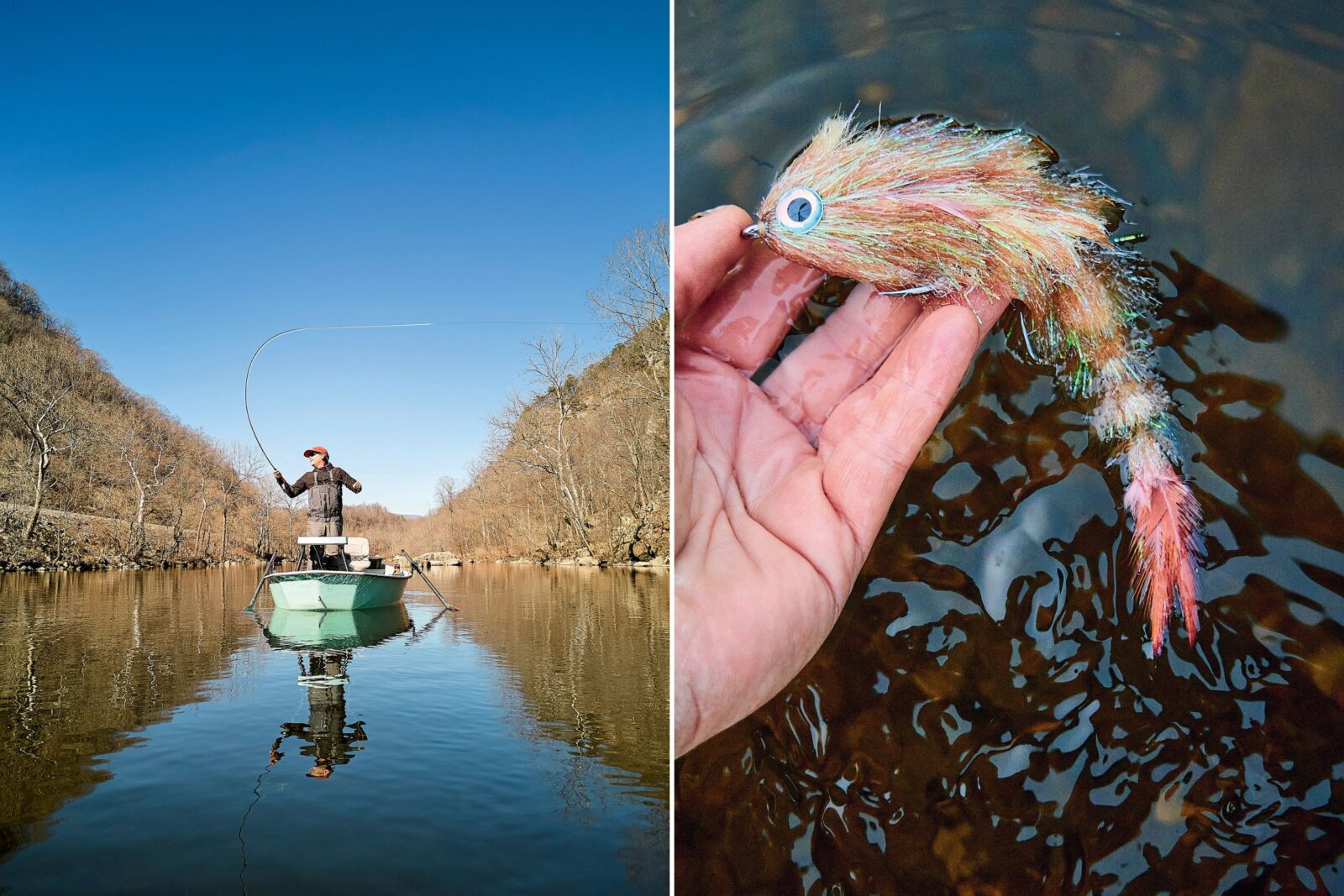
Photo: Peter Frank Edwards
A day on the drift boat; a Game Changer ready for action.
Game Changers mirror that action. Instead of layering feathers and fur onto a single hook, Chocklett designed an intricate architecture of tiny wire vertebrae, linked to one another like tiny toy train cars, with each car painstakingly wrapped in synthetic fibers, thread, and resin. The resulting fly appears to move organically through the water. It wasn’t just a new way of tying a fly. He’d created an altogether new and different entity.
As Chocklett gets to work on a Game Changer, he delivers a running discourse on turbulent flow and laminar flow, and how the distribution of density in the fly from the head to the tail (“business in the front, party in the back,” he says with a grin) creates an unstable resistance that helps it swim with a lifelike serpentine motion, and how he’s designed it so that water can move around the fly instead of through the center.
It is physics, art, and hydraulics, all held together with the ultimate, and ultimately cryptic, fly-tying material—fishiness.
I heard this from others as I spoke about Chocklett: His thoughtful demeanor and overall attitude of gratefulness prompt you to ask yourself, What is it about fly fishing that resonates so deeply among its practitioners?
Surely one element is that many of the best places to chase fish with a fly give the heart wings. Maybe it’s also that fly fishing itself involves embracing the idea of imposing side rails on what you’re willing to do to catch a fish—not that it’s the only right way, but that it’s the way you’ve chosen. Maybe all of that had something to do with why Chocklett gave up those Friday nights in high school so he could watch the heroes who would one day be friends. For him, pushing the boundaries of what is possible with a fly, with all of the constraints that entails, resulted in a new sense of freedom. And to Pallot and others, he exemplifies the sport’s heritage of respect for both the fish and the pursuit.
“I hope we have the wisdom to understand what we have in Blane Chocklett,” Pallot says. “He embodies everything that Lefty stood for. He is the future of the old school, and I hope that Blane has moved this sport in the direction that everything we built is going to go.”
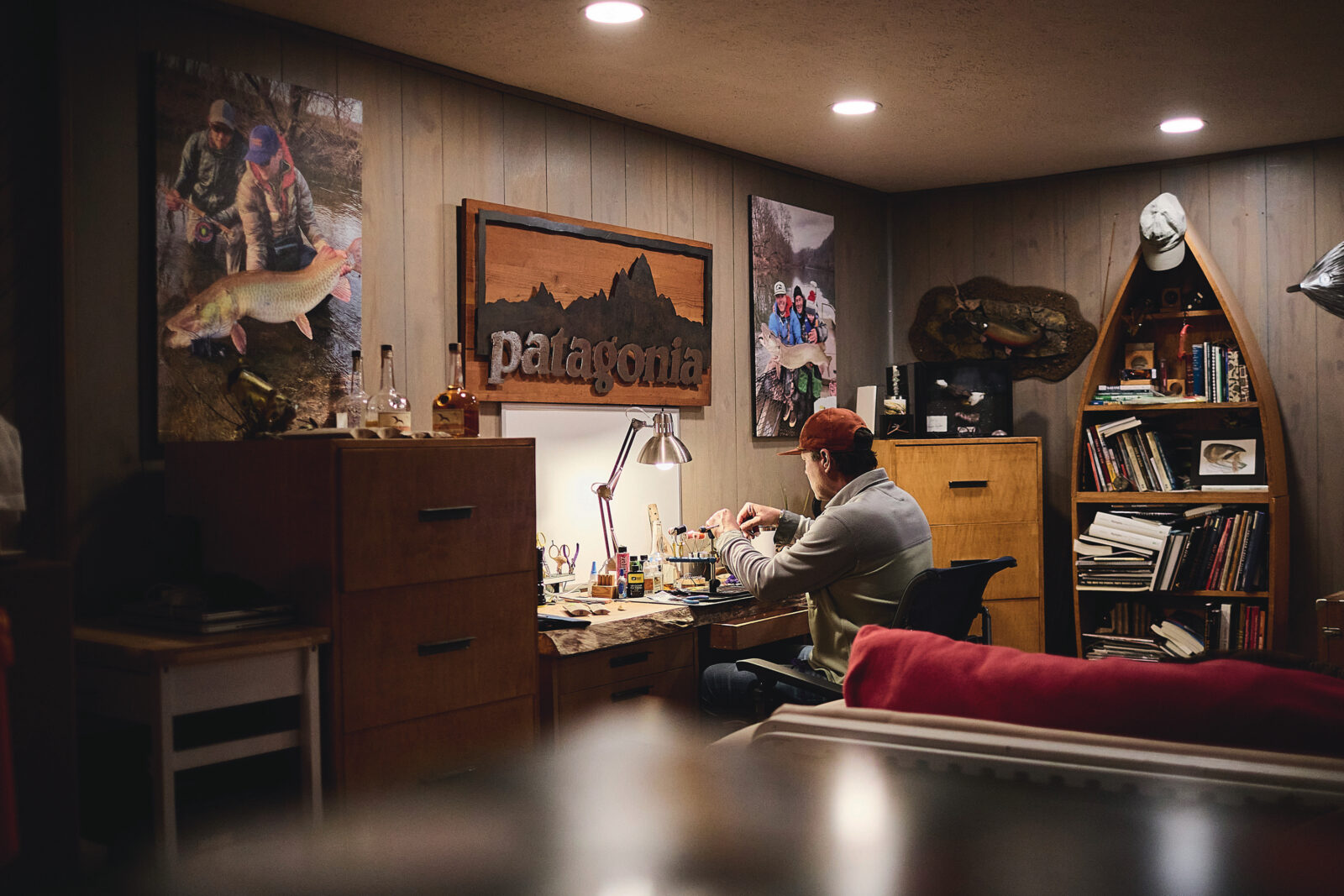
Photo: Peter Frank Edwards
Chocklett at work at his fly-tying table.
I do believe there is something about fly fishing that allows some people to soar. When I mention this to Chocklett, he nods. “I think it’s because there are so many of us who have the same mindset and moral values,” he says. “Respecting people, respecting nature, respecting fisheries, loving these places. So many of the people who have been important in this industry seem to have such…,” and he falters for a moment, then finds it: “kind hearts.”
But kind hearts don’t have it any easier than black hearts on tough fishing days. On the Jackson the next morning, I cast a white Game Changer downstream at a forty-five-degree angle and watch it sink slowly through the clear water as the current pushes it to the middle of the stream. The fly billows and undulates, changing from a fusiform shape that darts and wriggles to a pulsating, squid-like form that seems to writhe like smoke. I tic-tic-tic the fly across the top of underwater ledges, let it hover over the dark seams, then drop the rod tip so that the fly darts into the clefts, practically daring a fish to eat it.
Chocklett is on the oars behind me. He talks to the water, to his flies, to the fish, and to me.
There. Let it marinate there.
Let it hover. Hover, hover.
Let it go. Come on, fish.
There! You got him! He took that on the pause! That’s not a bad bass!
We pick up a few more fish but not the big females we’re hunting. Chocklett is clearly disappointed, though it’s a stunning day in the Virginia wildlands. Jack pines on the rock cliffs cast fangs of shadows across the water, and the creek banks are afire with early blooming wildflowers. The tough fishing we did to ourselves. We took a chance on the in-between times. We chose to fish the hard way. And I don’t want to admit it, but I’m not unlike that Blane Chocklett of yore, a little starry-eyed at fishing with one of the greats. We are, at the moment, right where we each want to be.
“Uh-oh,” he grunts as the raft clears a turn in the river. “Look at all those cows lying down. My granddad always said, ‘When the cows are lyin’ down, the fishing and hunting is no good.’ And I don’t know why, but I’ve seen it.”
I cast another Game Changer—this one dark and drizzled with olive—and we watch it twitch and billow. Lyin’ down cows or no lyin’ down cows, we’re on the water to fish.
“Show me the way,” I say with a smirk.
Chocklett doesn’t miss a beat. “Let it hover. Wiggle-wiggle-hover. Jiggle.”
“Jiggle or wiggle?” I ask. “Which one comes first?”
“Both,” he says, low and whispery and serious. “All of it. Everything. All at the same time.”

